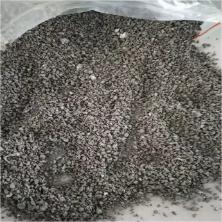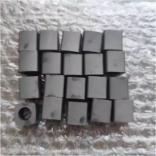**Title: Metal Melting Madness: Your No-Sweat Guide to Drilling Through Steel**
(How To Drill A Hole Through A Metal Plate)
**Intro**
So you need a hole in metal. Maybe it’s for mounting that custom motorcycle bracket. Or installing a new mailbox post. Perhaps it’s a creative metal art project. Whatever the reason, drilling through metal feels different than wood. Wood forgives. Metal fights back. That high-pitched screech, the smell of hot steel, the bit skating uselessly across the surface – we’ve all been there. Forget frustration. Drilling clean, precise holes in metal plates is absolutely doable. This guide strips away the mystery. We’ll cover the essential gear, the smart techniques, and the little tricks the pros use. Get ready to conquer that metal plate.
**1. What You Need to Drill Metal Effectively**
Drilling metal demands specific tools. Using your everyday wood bit on steel is a fast track to broken bits and disappointment. Here’s the essential kit:
* **The Right Drill:** A powerful corded drill or a high-torque cordless drill is best. Hammer drills are for masonry only; turn the hammer function OFF for metal. You need steady rotational force.
* **Metal Drill Bits:** This is non-negotiable. High-Speed Steel (HSS) bits are the standard. For tougher steel or stainless steel, cobalt alloy bits (like HSS-Co) are superior. They resist heat better. Titanium nitride coated (gold) bits offer extra slickness but can wear off.
* **Cutting Fluid or Oil:** This is your secret weapon. It cools the bit, lubricates the cut, reduces friction, and extends bit life dramatically. Use dedicated cutting fluid, heavy-duty oil, or even motor oil in a pinch.
* **Center Punch:** A small, pointed tool. You hit it with a hammer to make a precise dimple in the metal. This dimple stops the drill bit from wandering when you start.
* **Clamps:** Essential safety. Metal plates must be clamped securely to your workbench or a sturdy surface. Never hold it with your hand.
* **Safety Gear:** Safety glasses are mandatory. Metal shavings are sharp and hot. Hearing protection is wise for extended drilling. Work gloves protect your hands from sharp edges.
**2. Why Regular Bits Fail and Metal Bits Win**
Ever see a wood bit smoke and turn blue on metal? That’s failure. Metal drilling creates intense friction and heat. Regular bits soften, dull instantly, and often snap. Metal drill bits are engineered differently. They are made from harder steel alloys. HSS bits handle the heat reasonably well. Cobalt bits take it further, staying hard even hotter. The sharp cutting angles are also optimized for slicing metal, not tearing wood fibers. Lubrication is crucial because it carries away heat. Without it, even a metal bit overheats, dulls quickly, and can weld itself to the workpiece. Using the correct bit and lube means cleaner holes, faster drilling, and bits that last much longer.
**3. How to Drill That Hole: Step-by-Step Victory**
Conquering the metal plate is about control and patience. Follow these steps:
1. **Mark Your Spot:** Use a scribe or sharp marker. Make a clear, visible X.
2. **Center Punch:** Place the punch tip exactly on the X. Hit it firmly with a hammer to create a deep, clean dimple. This step is critical.
3. **Secure the Work:** Clamp the metal plate down tightly. No movement allowed.
4. **Choose Your Bit:** Select the correct size HSS or cobalt bit. Start smaller if you need a large hole; pilot holes help.
5. **Apply Lubricant:** Put a few drops of oil or cutting fluid directly on the dimple and along the bit’s cutting edges. Reapply frequently during drilling.
6. **Set Drill Speed:** Metal needs slow speed. Use the drill’s lowest setting or a medium-low speed. High speed creates too much heat.
7. **Start Drilling:** Position the bit tip perfectly in the center punch dimple. Hold the drill straight and steady. Apply firm, consistent pressure. Let the bit do the cutting.
8. **Maintain Control:** Keep the drill perpendicular to the metal surface. Don’t force it. Listen to the sound – a steady whine is good; a high-pitched screech means slow down or add more lube.
9. **Clear Chips:** Briefly pull the bit out occasionally to clear metal shavings (chips) from the hole. Add more lubricant.
10. **Finish the Hole:** Drill through smoothly. Reduce pressure slightly as you break through the backside to avoid tearing the metal.
**4. Applications: Where Metal Drilling Skills Shine**
Knowing how to drill metal opens doors everywhere. It’s fundamental for:
* **Auto Repair & Customization:** Mounting accessories, installing new parts, fixing brackets, modifying exhausts, building roll cages.
* **Metal Fabrication & Welding:** Preparing pieces for welding (draft holes), creating bolt holes, building frames, constructing machinery.
* **Home Improvement & DIY:** Installing security fixtures, mounting heavy shelves into studs (metal plates behind drywall), fixing appliances, building custom furniture with metal legs.
* **HVAC & Plumbing:** Installing ductwork, mounting pipe hangers, modifying metal enclosures.
* **Creative Projects:** Metal sculpture, jewelry making, custom signage, modifying tools, creating ventilation holes in computer cases or amp cabinets.
* **General Maintenance:** Repairing farm equipment, fixing gates, modifying metal enclosures for electronics.
**5. FAQs: Your Metal Drilling Questions Answered**
Let’s tackle common hurdles:
* **Q1: My drill bit keeps slipping when I start!**
* **A1:** You likely skipped the center punch. That dimple is essential. Make it deeper. Ensure the bit tip sits firmly in it before starting the drill. Clamp the work securely.
* **Q2: Why is my bit smoking and turning blue?**
* **A2:** Too much heat! You’re drilling too fast, using too much pressure, or forgot the lubricant. Stop immediately. Let everything cool. Use cutting fluid/oil generously. Slow your drill speed way down. Apply steady, firm pressure – not brute force.
* **Q3: The drill is screaming and not cutting!**
* **A3:** The bit is dull or you’re using a wood bit. Inspect the cutting edges. Are they rounded over? Sharpen the bit or replace it with a new metal-specific bit. Ensure you’re using lubrication and correct speed.
* **Q4: How do I drill a really large hole in thick metal?**
* **A4:** Start with a small pilot hole (maybe 1/8″). Then step up gradually with larger bits (e.g., 1/4″, 3/8″, 1/2″). Use cutting fluid liberally for each step and slow speed. For holes over 1/2″, a step bit is often a great choice.
* **Q5: Can I drill stainless steel?**
(How To Drill A Hole Through A Metal Plate)
* **A5:** Yes, but it’s harder. You MUST use a cobalt (HSS-Co) drill bit. Lubrication is even more critical. Use slow speed and high, steady pressure. Be patient; it cuts slower than mild steel. A center punch dimple is vital.
Inquiry us
if you want to want to know more, please feel free to contact us. (nanotrun@yahoo.com)


